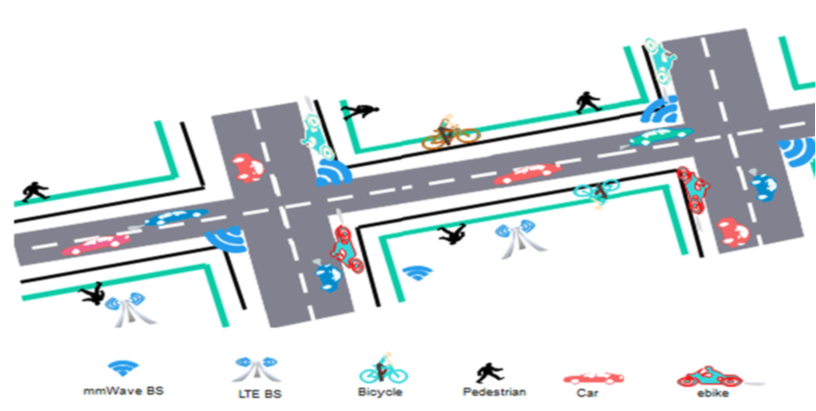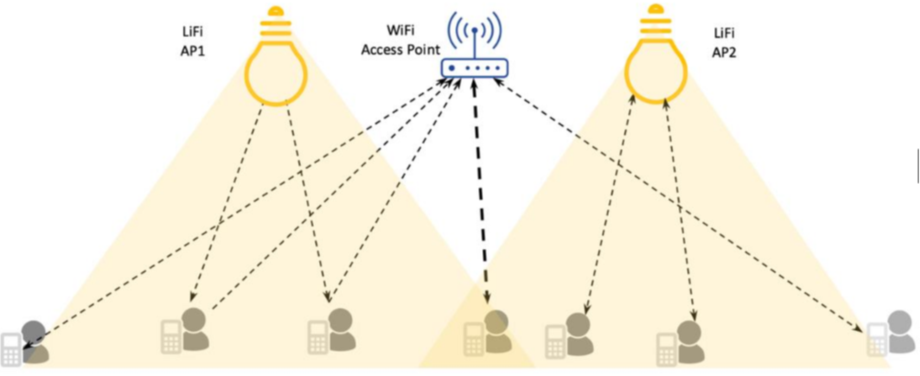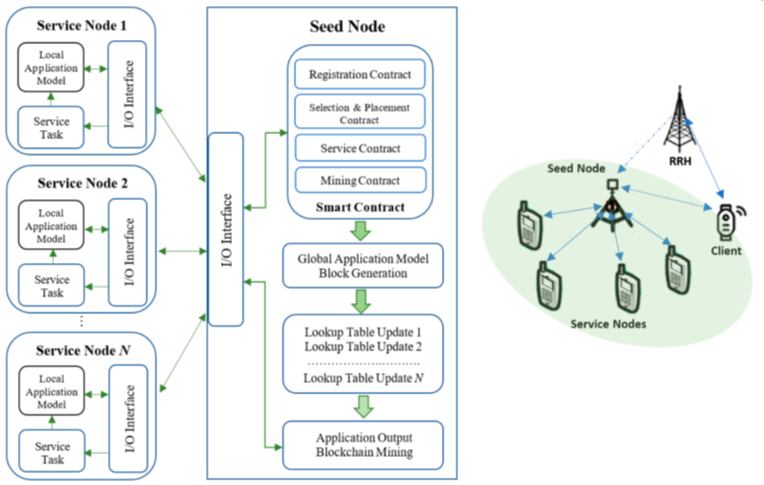Communications and Networking
This research theme focuses on the development of algorithms and protocols for wireless communications and networking.
Research areas
- Next-generation mobile cellular networks
- Visible light communication networks
- Blockchain networks
Our current projects
Next-generation cellular networks will operate at millimeter waves (mmWaves) to offer gigabit data rates. Unlike microwaves, mmWave links are prone to blockage due to user and topographic dynamics, resulting in irregular cell patterns that cause premature, delayed or unwanted handoffs (HOs).
To mitigate these issues, this research investigates an HO scheme based on a jump Markov linear system and deep reinforcement learning to account for abrupt changes in system dynamics and learn highly dimensional time-varying behaviours.
The scheme predicts the deterioration pattern of target links and then selects the more reliable target links for HO. The goals are to minimise the number of HOs, while maximising the sojourn time between HOs and the sum rates.
Principal investigator
- Peter Chong

Light Fidelity (LiFi) is a visible light communication solution that utilises the existing lighting infrastructure based on light-emitting diodes. It provides point-to-point and point-to-multipoint communication on a bidirectional channel at very high data rates. However, LiFi has small coverage and can experience frequent service outages. LiFi may integrate with wireless fidelity (WiFi) to form a hybrid system that provides reliable coverage.
Still, this hybrid system faces challenges such as a seamless integration, support for mobility, handover management, resource sharing, and load balancing. There are few tools available to holistically research these issues in a scalable manner.
This project develops a simulation framework to realistically simulate the physical and data link layers of a functional access point, the mobility of user devices, and the LiFi-WiFi integration with a handover facility.
Principal investigator
- Peter Chong

The opportunistic fog radio access network (OF-RAN) expands its offloading computation capacity on-demand by establishing virtual fog access points (v-FAPs), comprising user devices with idle resources recruited opportunistically to execute the offloaded tasks in a distributed manner. OF-RAN is attractive for providing computation offloading services to resource-limited Internet-of-Things (IoT) devices from vertical industrial applications such as smart transportation, tourism, mobile healthcare, and public safety.
However, the current OF-RAN design is lacking a trusted and distributed mechanism for automating its processes such as v-FAP formation and service execution.
Motivated by the recent emergence of blockchain, with smart contracts as an enabler of trusted and distributed systems, this project investigates the design of an automated mechanism for OF-RAN processes using smart contracts, and the resulting blockchain performances of our smart contract enabled OF-RAN through a federated deep learning use-case.
Principal investigator
- Boon-Chong Seet
- Peter Chong

Members
Theme leader
Theme members
PhD students
- Shakir Ullah
- Masoto Chiputa
- Yue Liu